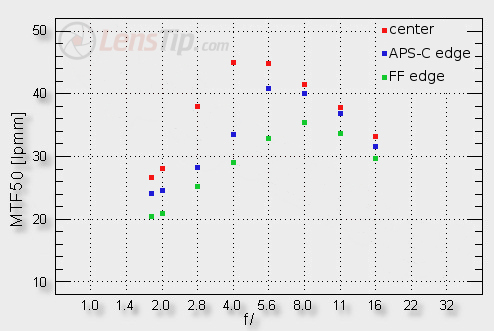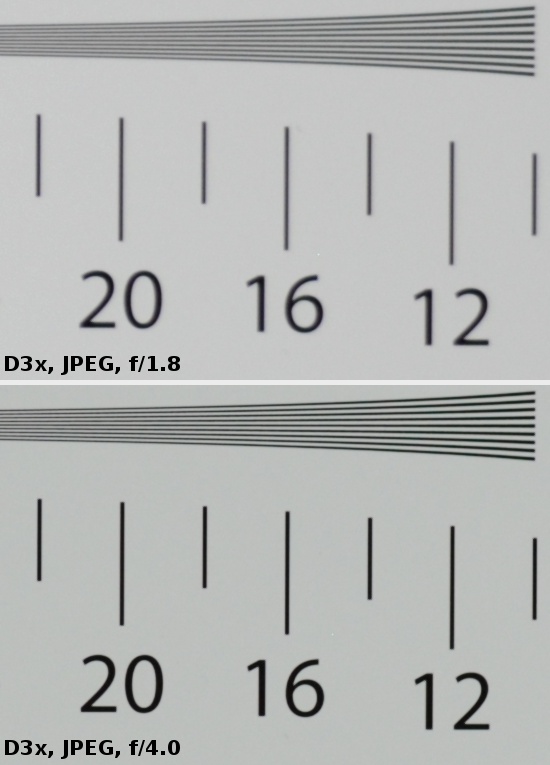Nikon Nikkor AF-S 50 mm f/1.8G
4. Image resolution
First, we would like to present here the results of the tested lens’s predecessor, so the Nikkor AF 1.8/50D, on the D3x . To tell you the truth it didn’t have good resolution near f/1.8-2.0, where it reached results on the level of 22-25 lpmm. Fortunately, on stopping down its performance improved very quickly and by f/2.8 we already had a value near 37 lpmm. The peak of its possibilities was reached by f/5.6 - 44 lpmm or so.
Now let’s check how the new Nikkor 1.8/50G compares.
Please Support UsIf you enjoy our reviews and articles, and you want us to continue our work please, support our website by donating through PayPal. The funds are going to be used for paying our editorial team, renting servers, and equipping our testing studio; only that way we will be able to continue providing you interesting content for free. |
- - - - - - - - - - - - - - - - - - - - - - - - - - - - - - - - - - - - - - - - - - - - - - - -

As you see the results are better and they improve right from the maximum relative aperture, where the performances is perhaps not good but still by several lpmm higher than in the case of the predecessor. Fully useful images are achieved somewhere near f/2.2 and then, on further stopping down, the results improve very swiftly, getting to 38 and 45 lpmm by f/2.8 and f/4.0 respectively. From f/5.6 relative aperture the values reached by both Nikkors, compared here, are, within the margin of error, the same.
When it comes to the edge of the APS-C/DX sensor once again you can notice a decisive advantage of the new lens by f/1.8-2.0. That advantage, however, disappears completely by f/2.8-4.0 and on further stopping down the results are once again almost similar.
An interesting situation can be noticed on the edge of full frame. Near the maximum relative aperture the new lens prevails slightly. By f/2.8 and f/4.0 the older version of the lens is better and from f/5.6 once again both models fare more or less the same.
To sum up for the majority of combinations of parameters the new Nikkor gives us a better image quality than its predecessor which, taking into account its price, was rather beyond reproach. Both instruments offer us really good price/quality ratio when it comes to image resolution results.
At the end of this chapter we traditionally present our test chart crops taken from JPEG files (frame centre).
 |






